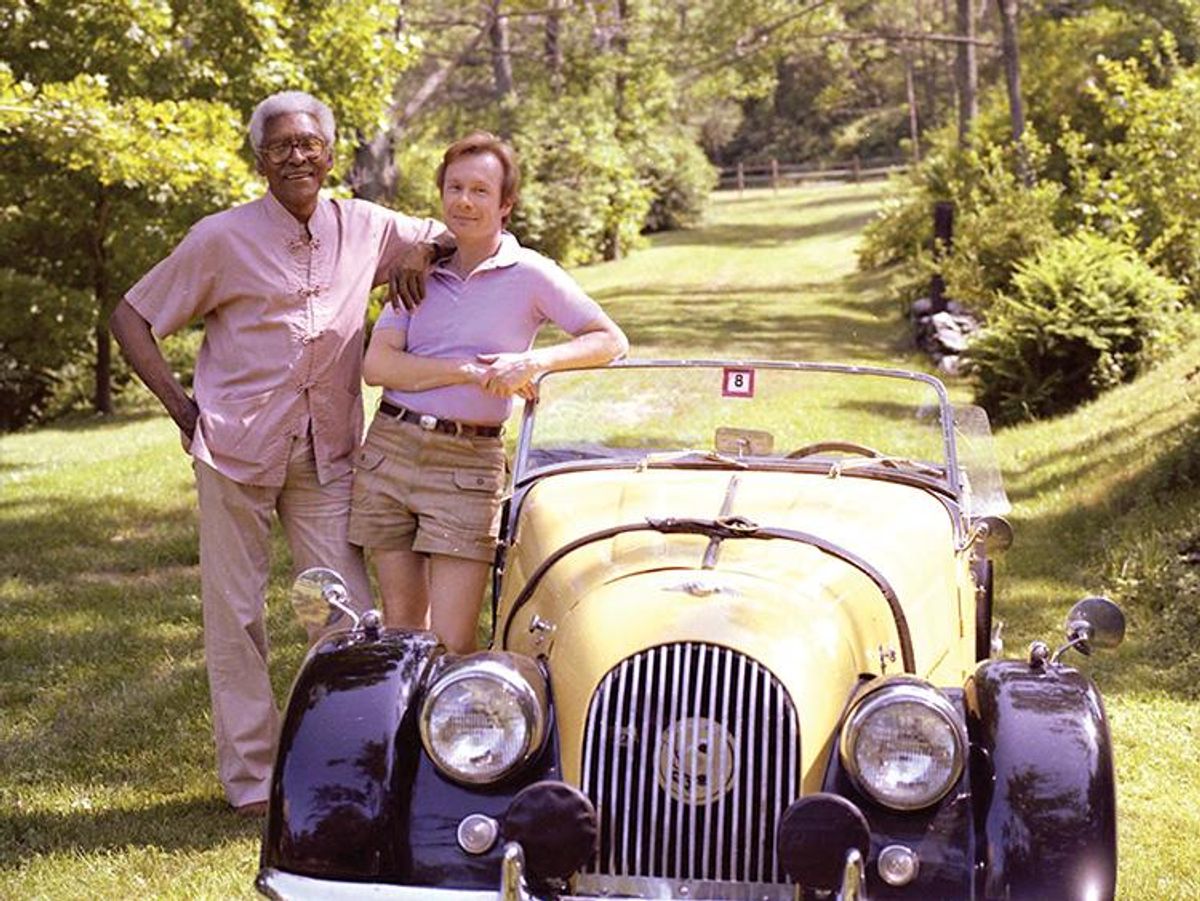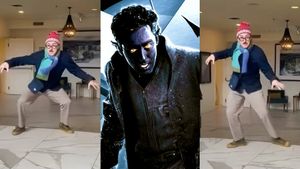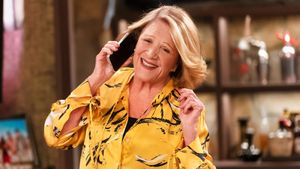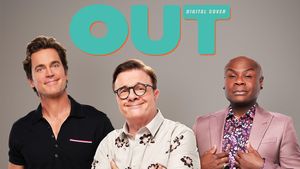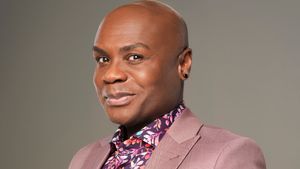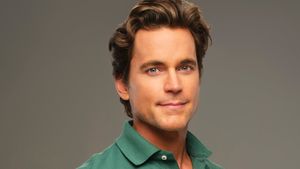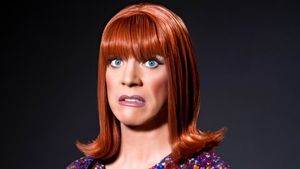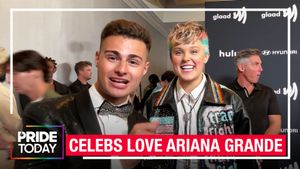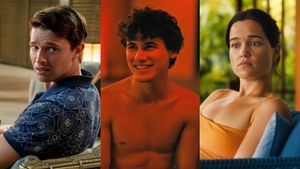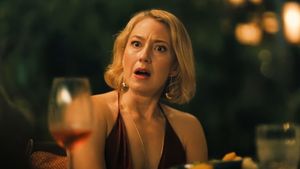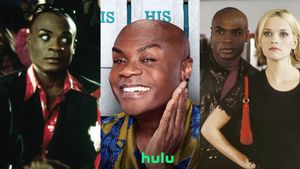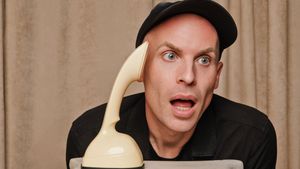Courtesy of Walter Naegle. Bayard Rustin and Walter Naegle.
After hearing Karen Thompson talk in the late '80s about her long battle to care for her partner after a car accident, I became obsessed with protecting my rights in my relationship.
So we signed up for a domestic partnership in West Hollywood, then with the state of California, then in San Francisco -- each conferring more and more rights -- culminating with two weddings (one annulled thanks to those Prop. 8 nutjobs). That's 25 years of seeking recognition and protection, so we're clearly committed, but we never took up one option that many, many LGBT couples did. We could have adopted. Not kids -- each other.
The concept of adult gay adoption may sound antiquated now, but for many couples an adoption, in which one partner legally adopts the other, was the best way to protect their relationships and families. Adoption grew in favor in part because of the illegality of same-sex coupling and the onslaught of so-called AIDS evictions (in which a boyfriend is booted from his own home by family members after his partner dies; something analogous happened to Vanessa Redgrave's lesbian widow character in If These Walls Could Talk 2).
Adoption is the promise Liberace allegedly made to Scott Thorson. And it's the get-around law that was used by financial moguls to protect their assets. Robert Allerton, the scion of the First Chicago Bank, adopted his partner in Illinois in 1959. Kenneth Rinker, the choreographer behind Murphy's Romance, adopted his partner, the Uruguay-born composer Sergio Cervetti, who appeared on the soundtrack of the film Natural Born Killers. The couple had their adoption dissolved and legally married a month after the Supreme Court ruling.
But this work-around wasn't just in Hollywood. For Walter Naegle, who legally became the son of the late, great civil rights activist Bayard Rustin, the adoption process took two full years -- beginning with Rustin reading in The Advocate about an adult gay adoption attempt that failed.
"Bayard asked if we should try it, and I was open to the idea," says Naegle. "Since adoptions were almost exclusively between adults and young children, there was no model to follow other than the regulations that were in place for those situations. This meant that my mother had to legally disown me and I gave up any legal rights to her estate. The state and city had to oversee the process, and a social worker was sent to our apartment to speak with both of us. I think that she understood immediately what was happening here, but nevertheless had to go through some formalities. In our case, I think she needed to determine that we were both of sound mind and body and doing this voluntarily. After that, we didn't hear anything for a while. I believe our lawyer was waiting for a judge he felt would be 'friendly' to the idea, and when that happened he moved the case forward. It was approved in early 1982. It definitely made a difference in terms of my rights, in hospital visitation and input in medical decisions and in settling Bayard's estate. Although I lived with Bayard for most of the 10 years we were together, I might not have been able to inherit the right to his apartment had I not been adopted."
He says he had no idea that couples a few decades later would actually be able to legally marry. "No, it didn't occur to us at that time that we would get to legal marriage in such a short time."
Unlike Rustin, who was decades older than Naegle, Diane Stetina, now 64 years old, actually adopted her older partner, Lucille Koon, who is now 80. The couple from Lewes, Del., met as colleagues while teaching at a small college. "I adopted Lucy many years ago, probably 20 years ago, so we could be considered family for tax reasons and medical reasons," she says.
Stetina admits that "everyone reacted strangely to the adult adoption move," underscoring something not often discussed in the LGBT community: the strong aversion against gay adult adoption and its supposed ick factor. Even though it was a smart financial move -- one that saved countless couples from facing hard choices around money, hospitals, and death -- the idea of adopting one's lover is still a hard sell for many. It was, of course, a smart financial plan B.
Like Naegle, Stetina says, "Never in my lifetime did I think I could marry the person I love and have all the benefits of most other heterosexual couples."
Stetina had to unadopt her partner, a process that "was long but not painful. It took over a year to unadopt each other so we could marry, which we did in July of 2013." Today the legally married couple "are both extremely happy with no regrets."
Other couples trying to move from adoption to marriage haven't had as much luck. While judges in some states have easily dissolved adult adoptions, it's actually much more difficult to divorce a "child" than it is your spouse.
Together for 45 years now, Nino Esposito, 78, and Drew Bosee, 68, are hoping to get married, a legal possibility they never imagined would come to them in their Pittsburgh community. But the two men are legally father and son, and an Allegheny County judge says that adoption law didn't allow him to dissolve their relationship. Now it goes to the state.
Acclaimed lesbian author Lillian Faderman, who has been with her wife Phyllis Irwin for nearly 45 years as well, didn't wait for a judge to annul her adoption. Irwin had adopted Faderman in 1983.
"Our son at that time was 8 years old," Faderman recalls. "I'd had him through donor insemination in 1975." Faderman had begun to travel a lot to support her landmark lesbian book, Surpassing the Love of Men, and "we feared that if anything happened to me, Phyllis couldn't get custody of our son, Avrom. Also, should he have gotten ill while I was gone, she would have had a problem taking him to the doctor."
Since Irwin is more than 10 years older than Faderman, she could do an adult adoption of Faderman in the state of California. "As soon as we did the adoption, we introduced Phyllis always as his grandmother -- though from the beginning he's called her 'Mama Phyllis.' The adoption, which was for his sake, was wonderful because it gave him the feeling that we were legally a family."
Faderman admits that if Irwin had "been allowed to do a second-parent adoption, of course we would have opted for her to adopt Avrom, our son. But there was no such thing as second-parent adoptions, even in California, in the early 1980s. If we'd been able to marry then, of course we would have been delighted to do that. But it wasn't even remotely a possibility at that time."
The couple legally married "practically the minute we could" in 2008. "We actually consulted a lawyer first. She told us that as long as there wasn't consanguinity [blood relations], we didn't need to undo the adoption. We've discovered more recently that she was simply wrong. We do need to undo the adoption, and we're now in the process of doing that."
While these couples say they have no regrets, the new marriage equality -- with all of its economic and romantic promise -- is certainly a wonderful complication, they admit. But couples who marry without dissolving their adoption are committing "incest" in some states. Courtney Joslin, a professor of law at University of California, Davis, told The New York Times that same-sex "couples who marry without voiding the adoption may in some states be subject to 'a criminal incest statute,' " and 25 states currently consider "relationships between adoptive parents and their adult children within the definition of incest."
When Naegle dealt with Rustin's death, he recalls, he felt some discomfort as The New York Times identified him as Rustin's son, even though the two were out and well known for a decade. Naegle has continued to support Rustin's legacy, most recently lobbying for recognition of their onetime home. The New York State Board for Historic Preservation recently unanimously approved the nomination of Rustin's New York City home for landmark status. Now the state sends the nod to the National Register.
After Rustin's death, Naegle remembers, "One dumb reporter asked me what I would say to someone who suggested that, because of the adoption, our relationship was incestuous. I paused for a moment, then said something like, 'I don't know why someone who doesn't know anything about me would want to say something so cruel and insensitive. The reality is that society didn't allow us to marry, so we did what we could do to legalize our relationship.' "
Diane Anderson-Minshall is an editor-at-large for The Advocate, editor-in-chief of Plus magazine, and co-author of the memoir Queerly Beloved.
